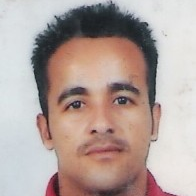
Manuel Contreras
Work place: School of Computer Science, Central University of Venezuela, Los Chaguaramos, Caracas, Venezuela
E-mail: mcontre@ula.ve
Website:
Research Interests: Software Engineering, Computer systems and computational processes, Computer Networks
Biography
Manuel Contreras received a M.S. in Computer Science from the University of Los Andes, Venezuela, in 2005. He is now a PhD student in Computer Science at Central University of Venezuela and will soon defend its thesis. He is currently working as a professor at University of Los Andes, Venezuela. His research interests include Computer Networks, Software Engineering, and Computer Science Education.
Author Articles
An Algorithm to Count Nodes in Wireless Networks Using their Actual Position
By Manuel Contreras Eric Gamess
DOI: https://doi.org/10.5815/ijitcs.2016.07.07, Pub. Date: 8 Jul. 2016
In this paper we introduce a novel algorithm for counting nodes based on wireless communications and their actual position, which works for stationary nodes and in scenarios where nodes are moving at high speeds. For this, each node is endowed with a Global Positioning System (GPS) receptor, allowing it to periodically send its actual position and speed through beacon messages. These data will be received by the first-hop neighboring nodes (which are within its scope or propagation range) that will have the ability to compute the actual position of the sending node based on the last broadcasted position and speed. The algorithm is constructed on the propagation of a count request message from the originator node toward nodes that are far away from it, and response messages traveling back to the originator, in the reverse path when it is possible, otherwise using the closest node on the way to the originator. To validate and evaluate the performance of our proposal, we simulate the algorithm using a famous network simulation tool called OMNeT++/INET. The results of our simulations show that the proposed algorithm efficiently computes a number of nodes very close to the real one, even in the case of scenarios of mobile nodes moving at high speeds, with an acceptable response time.
[...] Read more.Other Articles
Subscribe to receive issue release notifications and newsletters from MECS Press journals